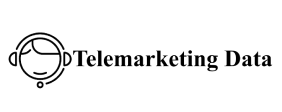Communication icons are visual symbols used to represent various forms of communication, including messages, calls, emails, and social media interactions. These icons play a critical role in digital interfaces, helping users quickly understand and navigate communication-related features. They are essential in applications, websites, and devices, providing a universally understood language that transcends linguistic barriers.
Importance of Communication Icons
Ease of Navigation: Communication icons streamline user interfaces by providing intuitive cues. For instance, a phone icon typically indicates a call function, while an envelope icon represents email. This helps users easily find and use communication features without reading lengthy instructions.
However, Universal Understanding: Icons convey meaning across different languages and cultures. A well-designed icon can be understood globally, making it easier for international users to interact with technology.
Space Efficiency: Icons save space in user interfaces, allowing designers to convey complex functions in a small, easily recognizable visual format. This is particularly useful on mobile devices where screen real estate is limited.
Common Communication Icons
Phone Icon: Represents voice calls. Variants include traditional handset shapes, smartphones, and ringing indicators.
Envelope Icon: Symbolizes email or messaging. It can be shown open or closed, often used to indicate unread messages.
Speech Bubble: Indicates chat or text messaging. Variants may include multiple speech bubbles to signify conversation threads.
Paper Plane: Commonly used to represent italy phone number sending a message, particularly in social media and instant messaging apps.
Bell Icon: Denotes notifications or alerts. Often used to notify users of new messages, calls, or updates.
People or User Icons: Represent contacts, social interactions, or user profiles. Variants include single and multiple figures to indicate individual or group communications.
Design Considerations
Simplicity: Effective icons are simple and clear, making them easy to recognize at a glance. Overly complex designs can confuse users.
For instance, Consistency: Icons should be consistent in style and size throughout an application to maintain a cohesive look and feel. Consistency helps users learn and predict the functionality associated with each icon.

Contrast and Visibility: Icons need to be easily visible against various backgrounds. High contrast ensures that icons stand out and are accessible to all users, including those with visual impairments.
Contextual Relevance: Icons should accurately represent the function they are associated with. Misleading icons can frustrate users and degrade the user experience.
Evolution and Trends
In other words, Communication icons have evolved with technological advancements and design trends. Early icons were simple and literal, such as a rotary phone for calls. Modern icons are often more abstract and stylized, reflecting contemporary design aesthetics and technological contexts, like a smartphone outline for calls.
Trends include the use of flat design, which Argentina Phone Number List simplifies shapes and removes unnecessary details, and the move towards more inclusive and representative icons that reflect diverse user bases.
Therefore, Communication icons are essential elements in modern user interfaces, facilitating intuitive navigation and universal understanding. By adhering to principles of simplicity, consistency, and contextual relevance, designers can create effective icons that enhance user experience and ensure smooth interaction with digital communication tools. As technology and design trends evolve, communication icons will continue to play a crucial role in how users engage with digital platforms and devices.



